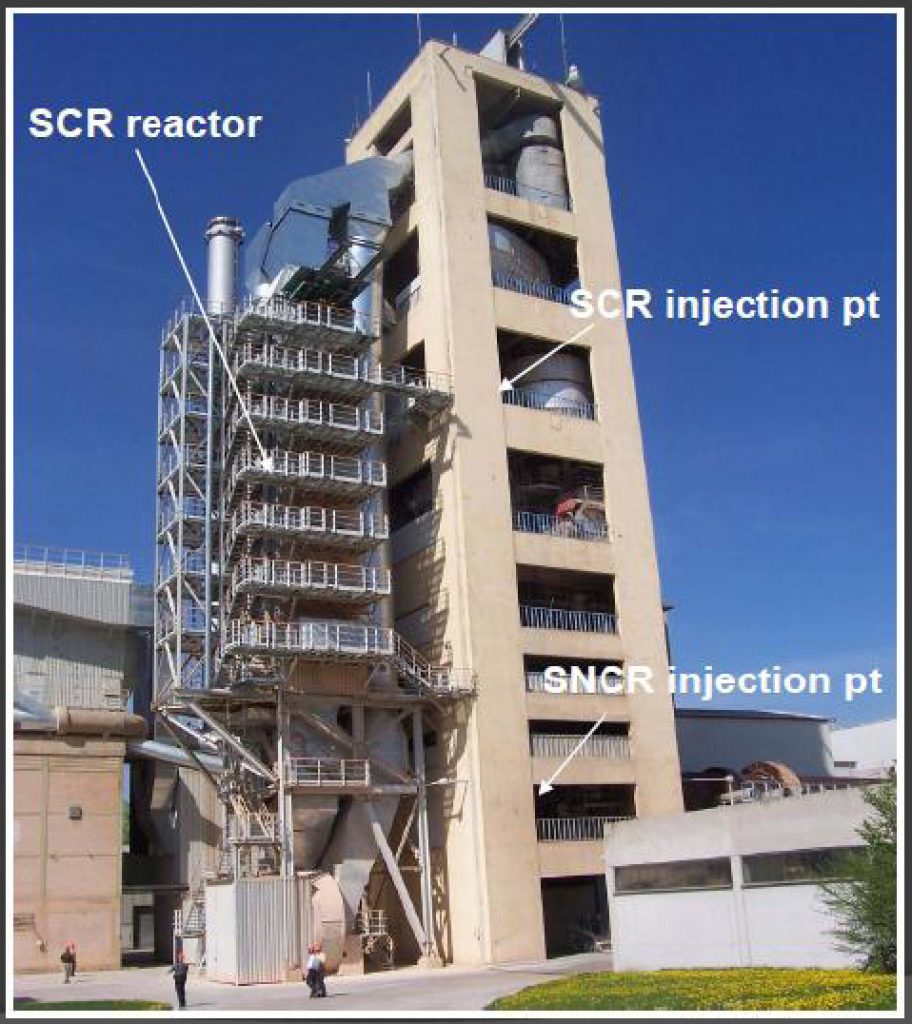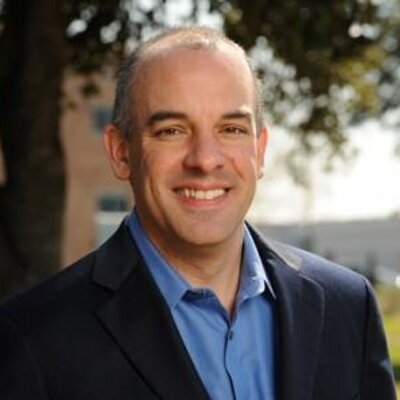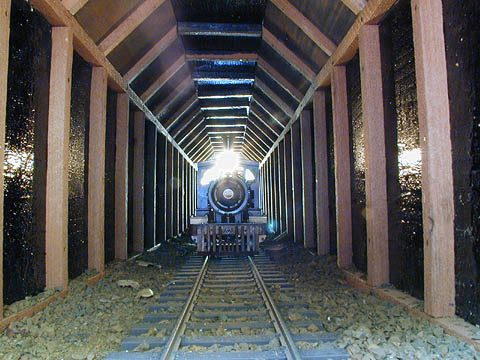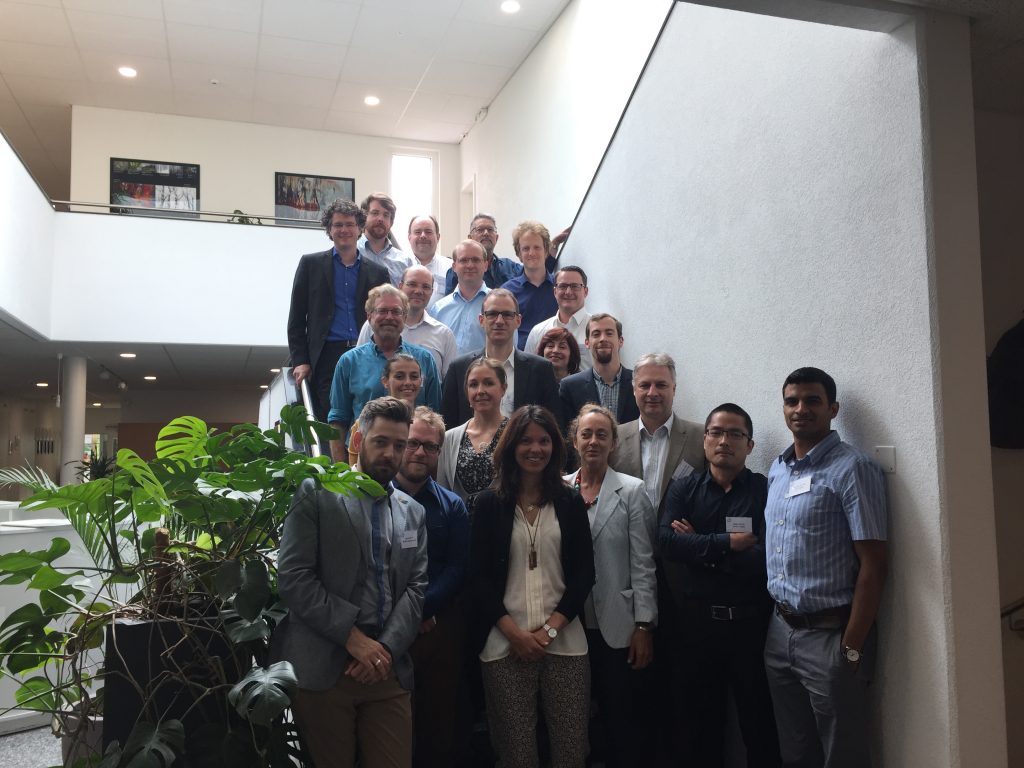Mid-Day Update: Drones are Only One Part of Our Ambitious Project
Keep 'Em Flying
So far, contributions from our supporters have got our drone out of the hanger and into the air.
Now we need to get it above cement kiln and coal plant smokestacks we want to monitor. Help us gain monetary altitude.
This "Giving Day," Downwinders is trying to raise $6500 to fund a full 72 hours of airborne investigation by our pollution-sniffing drones.
From 6 am to 12 Midnight tonight, contributions of just $25 or more to Downwinders can get matched or expanded by the Communities Foundation of Texas.
Not only does your donation go further today, it also helps us fund new projects like our North Texas CLEAN Air Force.
But citizen-owned drones are only one part of a larger, more ambitious air quality monitoring project now taking shape in DFW.
Along with our academic partners in a new Air Research Consortium, we want to establish a region wide network of hundreds of stationary and mobile e-sensors that can give you better and more nuanced air quality information.
We want to take over the State's job – which it isn't doing very well anyway. The first step for us is getting our drones up in the air and doing research.
One hour of drone flight time costs $90. A full 72 hours in the air costs about $6500. That's our goal today.
And then there's this…..
We just won a fight it took 15 years to win
 After 15 years of hard work we finally saw the installation of a state-of-the-art air pollution control system in one of thethree Midlothian cement plants this month.
After 15 years of hard work we finally saw the installation of a state-of-the-art air pollution control system in one of thethree Midlothian cement plants this month.
It could reduce smog pollution from the plant's kiln by 80-90%.
Only your support enabled us to stick around and follow-though on this goal.
WE CAN'T DO THIS WORK WITHOUT YOU
Today Only: We Need Your Help To Get This Guy Off the Ground
This "Giving Day" Downwinders is trying
to raise $6500 to fund a full 72 hours
of airborne investigation by our
pollution-sniffing drone
From 6 am to 12 Midnight tonight, contributions of just $25 or more to Downwinders can get matched or expanded by the Communities Foundation of Texas.
Not only does your donation go further today, it also helps us fund new projects like our North Texas CLEAN Air Force.
We're adding an exiting new high-tech tool to our fight for cleaner air. One that can replace, not just fight, the status quo.
Air-monitoring drones can reveal pollution hot spots stationary monitors can't. They can respond to accidents and tell you whether that plume of smoke really is "harmless."
One hour of drone flight time costs $90. A full 72 hours in the air costs about $6500. That's our goal today.
Your lungs are worth it.
We're the only clean air group in DFW with full-time staff.
All our board members live here.
We depend on DFW residents like you for our continued successes, like….
Stopping the burning of hazardous waste in local cement plants
Shutting down the outlaw Exide lead smelter in Frisco
Writing the most protective gas drilling ordinance in Texas
And now – fighting for a new federal anti-smog plan for DFW to replace the state's do-nothing approach
WE CAN'T DO THIS WORK WITHOUT YOU
Thanks for your Consideration
We Did It: After 15-Years of Persistent Organizing, Citizens Finally See Modern Controls on a Midlothian Cement Plant. And Now We Want It on All of Them
 Holcim is the first cement plant in the nation to voluntarily install an industrial catalytic converter called SCR on its smokestack, significantly cutting smog-forming air pollution in DFW.
Holcim is the first cement plant in the nation to voluntarily install an industrial catalytic converter called SCR on its smokestack, significantly cutting smog-forming air pollution in DFW.
But despite operating only 26 miles from EPA headquarters, the Agency and State of Texas still claim the technology isn't "feasible"
Downwinders is proud to announce Midlothian's Holcim cement plant is the first in the nation to voluntarily install pollution control equipment significantly cutting smog-forming air pollution, along with other dangerous emissions.
"Not many people may notice, but Friday is a big day for air breathers in DFW, as well as for everyone in the country who lives downwind of a cement plant," said Tamera Bounds, Chair of Downwinders at Risk, the clean air group that's been relentless in its pursuit of the technology for North Texas since 2001.
Friday marks the official deadline for Holcim's Midlothian cement plant to have its Selective Catalytic Reduction, or SCR system, up and running on one of its two giant kilns in order to be compliant with EPA emissions limits.
Although almost a dozen cement plants in Europe have installed the technology over the last twenty years and it's widespread in the American coal industry, Holcim is so far the only cement plant in the U.S. to install SCR on one of its kilns without a government mandate.
A pilot test using SCR at Midwest cement plant was required by a Department of Justice enforcement action in 2010. Results show smog-forming pollution was cut by at least 80% – roughly twice as much as pollution controls now in use in the US, including Midlothian. In Europe, SCR has a track record of removing 80-90% or more of the smog-forming pollution that has kept DFW in violation of the Clean Air Act since 1991. It also cuts the emissions of air toxics, particulate matter, and dioxins by double-digits.
With three cement plants and four kilns, Midlothian hosts the largest concentration of cement manufacturing in the US, and the largest "stationary" sources of air pollution in DFW. Since the late 1980's, the city has become a national battleground over cement plant pollution. First, over the use of hazardous waste as "fuel" for the local kilns, then over the closing of dirtier, obsolete "wet" kilns contributing to smog and climate change, and now over how fast new kilns can be updated to reflect 21st technology. 
Bounds and others say the installation of SCR on all four kilns in Midlothian would mean a huge benefit to public health for residents in Tarrant County, where the predominant winds push the plumes from the kilns. A 2009 Cook Children's Hospital study showed childhood asthma levels highest directly downwind of the cement kilns.
The demand for the technology is a central part of the group's push to replace the current State-sponsored anti-smog plan with a more effective, and protective, one from EPA. So far, Dallas County, the City of Dallas, two Congressional Representatives and a State Legislator agree with them. But incredibly, the Agency maintains the SCR technology Holcim has freely invested in to reduce pollution and is already operating less than 30 miles from its regional headquarters is not "technically feasible."
Downwinders and other groups in the DFW Clean Air Network regional alliance are challenging EPA's refusal to recognize a game-changing pollution control technology that could help DFW finally put its smog problems behind it a well as offering similar help to other parts of the country downwind of cement plants.
"It's rare these days to find the EPA embracing Texas' approach to ignoring advances in environmental science, but that's exactly what happening," said Bounds. "Both State and EPA officials are acting like 3rd Graders – closing their eyes and humming loudly, pretending this time-tested technology isn't operating right in front of them. But it does, and it's here to stay."
Bounds wants the EPA to take note of the cuts in pollution triggered by Holcim's operation of its SCR system and then hold ALL the Midlothian plants to the same modern standard. "You have a piece of equipment that is setting a higher bar for pollution control. Every cement kiln in DFW should have to meet that higher bar now. No other anti-pollution strategy makes sense."
It's been a long and circuitous route to getting SCR installed in a Midlothian cement kiln. Along the way, the region's clean air activists moved the entire nation closer to widespread use of this control technology.
North Texans first heard about the use of SCR in the cement industry through a citizens group fighting a proposed new cement plant in New York state in 2001.They'd commissioned a study from a NYC engineering firm identifying European cement plants that had already successfully installed the technology.
Downwinders tried and failed to include SCR in the anti-smog plan in 2003. It then used a 2005 settlement agreement with the State over the failure of that plan to get the then Rick Perry-controlled Texas Commission on Environmental Quality to perform an independent assessment of the technology. That landmark study produced results that are still reverberating today. In it, five independent experts chosen by Downwinders, the cement industry, and the State declared SCR to be ready for prime time.
"SCR is a commercially available technology. It offers the possibility of significant NOx reduction at the plants in Ellis County. As an 'add on' technology, which can achieve 90% or greater NOx reduction, with demonstrated performance at hundreds of coal fired power plants, SCR is a viable technology that is available for both dry and wet kilns."
That conclusion, from cement industry experts, in a TCEQ study, is now a decade old.
At the same time they were working to bring SCR to Midlothian, Downwinders also led the fight for new EPA emission limits on cement kilns that burn hazardous waste. A 2009 national hearing at DFW Airport attracted over 200 people. Those emission limits clamped down on air toxics. Holcim couldn't meet them without adding controls. They choose an SCR unit on one kiln and a thermal oxidizer (re: flame) on the other to try and stay in compliance. Even though Holcim installed SCR to address air toxics, or Volatile Organic Compounds and not smog pollution, the effect on emissions will be the same.
Meanwhile, the 2006 TCEQ study and subsequent push by Downwinders for SCR in Midlothian helped persuade the EPA to require the pilot test in 2010. That test, as well as Holcim's experience in Europe, set the stage for SCR's official debut on the Texas prairie on Friday.
"It's been a long fight, but change is hard," said Bounds, "and it doesn't happen in a straight line."
Help Us Celebrate This Victory That Was 15 Years in the Making
Please consider contributing $25 or more on "GIVING DAY" NEXT THURSDAY to keep us on the front lines of change another 15 years.
Giving Day is an all day online giving event sponsored by the Communities Foundation of Texas.
Downwinders will have our own online Giving Day page where you can click and give from 6 am through 12 Midnight next Thursday.
Every contribution of $25 or more is matched or extended by the Foundation.
This year, we need your support to keep our full-time staff in the field, as well as fund our 2nd annual Root and Branch Revue for activists, and assemble our North Texas Clean Air Forceof air-monitoring drones.
Oh yeah, we're also opening a school for organizers in January.
We're based in DFW. All our board members are from DFW. Our priority is DFW air. Your contribution stays in North Texas to fund the fight for clean air in North Texas.
We know you're being assaulted by Giving Day appeals from all the local non-profits, and there are lots and lots of good causes. We only request that you ask yourself how many other local groups can repeatedly pull off meaningful victories with so few resources?
We were able to bring SCR to Midlothian with your help. We need your help again next Thursday. We think we've earned it.
Thanks.
“Meet the Drones” Mixer Oct 6th
Thursday, October 6th
5:00 to 6:30 pm
TCU Alumni Center
2820 Stadium Dr
Fort Worth
Have a bite to eat, a drink, and stroll amongst the drones we're assembling for our North Texas Clean Air Force.
Representatives from the University of Texas at Dallas will be displaying their fleet of fixed-wing and rotor copter drones. TCU, UTA, UNT and the UNT Health Science Center have all been invited to set up displays and show-off their high-tech capabilities as well.
Chat with our academic parterns in grassroots air monitoring and watch as a certified drone pilot demonstrates the new technology we're using to fight for cleaner air.
This should be of interest to anyone looking for Do-It-Yourself ways to monitor the air we breathe as well as Downwinders supporters in general. We're adding a high-tech tool to our tool box and we want you to see how we're spending your contributions. Support a citizens' North Texas Clean Air Force.
Root and Branch 2017: Here’s Your Chance to Put on a Show
AN OPEN MEETING
Help Us Start to Organize the 2017 Root and Branch Revue
Activist Conference
Saturday, September 10th
3-5pm
Common Desk Co-Working Space
633 West Davis in North Oak Cliff
If you could plan a conference for you and your peers to help train and motivate you as environmental activists in Texas, what speakers, events, forums, exhibits, panels, music, and/or art would you choose?
Last year Downwinders brought Love Canal's own Lois Gibbs to DFW to be our featured guest at the very first Root and Branch Revue – a conference aimed specifically at training and educating DFW and Texas environmental activists. We also teamed up with the Young Turks at Bar Politcs to present the first evening of "environmental comedy" in DFW history, and hosted a panel on what fracking activists can do in the wake of new state restrictions on municipalities.
Because of the elections, Downwinders has scheduled the next the next Root and Branch Revue for January 25-28, 2017. This time we're specifically focusing on "Citizen Science," through the lens of Environmental Justice.
We're looking for DFW activists who want to help shape the content and format of this one-of-a-kind event, so we're opening up the planning process to everyone who's interested. This is our first public planning meeting.
Bring your thinking caps and dreams. We need ideas for workshops, speakers, etc. for this "SXSW for activists." If you ever attendded a conference and wondered how you'd run things differently, now's your chance to put theory into practice.
Anti-Pipeline Support Action in Dallas on Friday
11 AM
THIS FRIDAY, SEPT 2nd
ENERGY TRANSFER HQ
8111 WESTCHESTER in DALLAS – by the N. Dallas Tollroad (map)
The American Indian Movement of Central Texas is sponsoring a protest in support of the increasingly high profile anti- pipeline protest in the Dakota Indian Country in Dallas this Friday. The event is co-sponsored by a host of local and state environmental groups, including Downwinders at Risk.
If built, the Dakota Access pipeline (DAPL), would pass under the Missouri River…twice. The pipeline threatens to contaminate the drinking water, crops and burial grounds of the Standing Rock Sioux tribe.
Federal regulatory agencies quietly approved DAPL, which will transport Bakkan Shale crude oil from North Dakota through South Dakota, Iowa and Illinois.
The Dallas connection? Dallas-based Energy Transfer Partners is the pipeline's developer.
You may already know Energy Transfer's CEO, Kelcy Warren. He bought the naming rights to the Dallas Deck park over Woodall Rogers that bears his son's name and is a big Jackson Browne fan. Show up and protest Before The Deluge.
Chris Turner Becomes First State Representative to Ask EPA for new DFW Air Plan
 State Representative Chris Turner, whose District 101 spans west Grand Prairie and east Arlington between Dallas and Fort Worth became the first state elected official to urge EPA to reject the current state anti-smog plan for DFW and substitute one of its own.
State Representative Chris Turner, whose District 101 spans west Grand Prairie and east Arlington between Dallas and Fort Worth became the first state elected official to urge EPA to reject the current state anti-smog plan for DFW and substitute one of its own.
In a letter to EPA Chief Gina McCarthy, Turner used language echoing the sentiments of US Congresswoman Eddie Bernice Johnson and Congressman Marc Veasey.
"While I hope that the TCEQ will take the public comments it received by EPA, the Texas Medical Association, and others into consideration and require additional emissions controls in the final SIP revision it submits to EPA, I ask you to consider rejecting the state's plan use of a Federal Implementation Plan if your agency decides that the final SIP revision is insufficient and the state will not negotiate in good faith."
The entire letter can be read here.
Besides Johnson and Veasey's letters, Dallas County and the City of Dallas have voted in favor of resolutions condemning the currently proposed plan has being inadequate. More cities and counties are expected to pass similar resolutions as elected bodies come back from summer breaks.
Members of the DFW Clean Air Network (DFW CAN) – Downwinders at Risk, the Sierra Club, Beyond Coal, the Texas Campaign for the Environment, Mansfield Gas Well Awareness and Livable Arlington – are also out and about obtaining letters like Turner's from other state and federal elected officials.
Turner's district is directly downwind of the Midlothian cement plants and includes numerous natural gas wells and facilities. Gas sources are now the fourth largest contributor to DFW smog.
According to EPA, the state plan arrived at the EPA's doorstep August 8th, but it's already DOA.
Although ozone season is far from over and it's been a relatively mild "season" so far, we know in its second full year out of the three years allotted for success, the state air plan will, at best, have brought down ozone levels by 1 ppb from 2015 levels, to 80 ppb. We're supposed to be at 75.
The parrot is dead. We're just waiting for the state to admit it – or the EPA to shut the farce down.
Meanwhile, the more political support on the ground in DFW for an EPA alternative that might actually reduce emissions from major sources in North Texas like gas, cement kilns, and coal plants, the more likely it is for the Agency to accept the challenge, and endure all the pushback from Austin it'll get if it decides to take over the job.
If you're interested in trying to get your city, county, or state or federal elected officials to join the band wagon and reject the state plan, write or call us and we'll work with you in getting something accomplished that can add to the momentum.
Testify! Stop Getting Railroaded by the RRC
 There's no better symbol of the anachronism that is Texas state government than the ineptly named Railroad Commission, or RRC. It has nothing to do with choo-choos, and everything to do with the State's oil and gas legacy.
There's no better symbol of the anachronism that is Texas state government than the ineptly named Railroad Commission, or RRC. It has nothing to do with choo-choos, and everything to do with the State's oil and gas legacy.
Or is it misnamed? Its innocuous title keeps it off a lot of citizens' radar screens while going about its business of shoving anyone or anything not in the oil and gas business around to make it more comfortable. Our drilling contaminating your water? You can to get the bottled stuff delivered. Our waste disposal causing earthquakes? You'll get used to it. Our air pollution causing your child's nosebleed? What's a couple of ER visits compared to our nation's energy security? Railroad? Yes – it's right there in our name.
Instead of being appointed by the Governor, the three RRC commissioners are elected statewide…with the help of contributions from the oil and gas industry. This isn't the fox guarding the hen house. There are no hens left.
This is why any review of the Commission, even one by the equally inept State Legislature, is a chance to get the word out about how god-awful the RRC is and what needs to be done to overhaul it. Beginning this month, that's what's happening, because 2017 is the year the Railroad Commission is getting "sunsetted" by the state.
Sunset laws demand that every state agency must come before the legislature and justify itself anew about every 12 years. Usually pro forma exercises, occasionally a terrible agency is allowed to die. Most have their missions amended or rules tweaked, or their names changed. this is how the "Texas Natural Resources Conservation Commission," or, "TNRCC/"TRAINWRECK," became the "Texas Commission on Environmental Quality/"TCEK." After being postponed last session, it's the Railroad Commission's turn now.
Tomorrow night's faux-official Town Hall meeting on the Railroad Commission being sponsored by Earthworks, Public Citizen and the Sierra Club is a kind of milk run for the more important job of testifying in front of state legislators in Austin later in the month, on the 22nd. Attend to find out how you can use this process to gain more publicity for its terrible record, and perhaps be able to actaully tweak the system to be more citizen-friendly.
Texas Railroad Commission Town Hall
Tuesday, August 2
Grapevine Convention Center
1209 Main St.
(located off 114 and Main St. exit)
Registration: 6:30 pm
Program: 7:00 pm
Texas Railroad Commission Public Testimony at the Capitol
Monday, August 22
For more information on the whole process, talk to Rita Beving with Public Citizen and the Sierra Club, 214.557.2271
We Already Know the State Air Plan for DFW has Failed a Second Year In a Row. The Only Question is By How Much.
 It's only July, but midway through its second year, we already know the state's air "plan" for DFW has once again failed to obtain compliance with the current 75 parts per billion ozone standard.
It's only July, but midway through its second year, we already know the state's air "plan" for DFW has once again failed to obtain compliance with the current 75 parts per billion ozone standard.
Last year the regional peak went from 80 to 81 ppb based on a rolling three-year average of readings from the Denton monitor. Even though we've only had one or two awful ozone weeks this year so far, those were enough to establish a 2016 Denton monitor average of 80 ppb going into what are tradtionally the smoggier months of August and September. So two years in, the state's plan can do no better than get us back to where we started in 2014 – and might do considerably worse.
Officially, the state's only hope for last-minute success is a drastic drop in smog at the Denton monitor next year in order to swing the three-year running average. Those hopes are hanging by a tailpipe with the scheduled introduction by the federal governement next summer of a new, lower-sulfur gasoline mixture for all U.S. cars and trucks. Austin's "plan," such as it is, is to ride the coattails of that change in gasoline formula in hopes its widespread use will significantly lower smog numbers thoughout DFW.
EPA agrees with Texas that they'll be a decline in vehicle-generated smog due to the new gas mix. However, it disagrees that it alone will be able to bring DFW into compliance with the Clean Air Act by the end of ozone season in 2017. At this point, the Denton monitor would have to have a 2017 fourth-highest reading of 64 ppb or lower to come in at a running average of 75 ppb. Not impossible, but it requires an unprecedented 10-11 ppb annual drop from the current average, much less the higher one that August or September might deliver.
The state can keep saying the clock is still ticking on their plan, but the numbers are already in, and they aren't cooperating.
This kind of math is the reason why Downwinders, the Sierra Club and other groups are requesting EPA to reject the state plan that now has arrived at its doorstep. It's the reason both Dallas County and the City of Dallas passed resolutions requesting the same, and the reason why both Congresswoman Eddie Bernice Johnson and Congressman Marc Veasey wrote a letter directly to EPA asking that the agency step in and do the job the state will not do.
Rejection of the bad state plan is the necessary first step in setting the stage for a more comprehensive EPA plan – one that would include all the large sources of smog pollution affecting DFW that have been untouched by state air plans over the last decade: like the oil and gas industry, the Midlothian cement kilns, and the East Texas coal plants.
We're tired of failure. We've experienced 25 years of it. We're experiencing it again this year. If you're tired of dirty air too, please contact us about how your city and county can pass a resolution asking the EPA to reject the state's plan and start writing one that will actually work.
Downwind in Switzerland: “Do you carry responsibly-sourced concrete?”
(Half of these people represent industry. Half are environmentalists. Can't tell which ones? That's a good thing.)
Should a bag of concrete be like an organic banana or a new chair made out of recycled wood and get "certified" as being responsibly-sourced, or "sustainable?" And if so, what's the criteria for making such a judgment, and who's making it?
Those are the complicated questions at the heart of a new worldwide initiative by the concrete/cement industry to come up with a way to sell its products in a more environmentally-friendly way.
After a couple of years of working on a scoring scheme, the mostly European-based intra-company group (LaFarge/Holcim, Heidelburg, CEMEX) charged with designing the system was ready to unveil it to the international environmental community for the first time in mid-July at a small meeting in Gland, Switzerland, headquarters of the International Union for the Conservation of Nature, whose staff facilitated the review process. IUCN had performed the same function for the aluminum industry when it went through a similar "green" self-examination.
Nine different environmental groups from at least seven different countries (Britain, Bulgaria, China, India, Lebanon, Switzerland) spent three days assessing and critiquing the industry's proposal – including the lone representative from the U.S., Downwinders at Risk's Jim Schermbeck. Participants not only met during the day, but ate together, and stayed in the same lone hotel in the small, outlying suburb of Geneva. Inside the meeting room, discussions were often frank, funny, and awkward. Outside, conversations ran the gamut, from architecture, to vacation trips, to Texas BBQ.
It's not a surprise that the concrete/cement business wants its relatively messy business to be seen through green-tinted glasses. Old timers will recall the burning of hazardous waste in Midlothian cement plants was relabeled "recycling" in the 1980's and 90's.
But this time around, the pressure is not necessarily to greenwash the transformation of a cement kiln into a waste incinerator, but to give an environmental patina to the final product, concrete, so that it can compete in the marketplace with building materials that already have their own green certification schemes up and running.
In other words, there appears to be new market pressure on the industry to "go green." Wood and Aluminum all now have their own systems for doing so. Concrete/Cement is lagging behind because it can't point to such a system. They want everyone from a construction site manager to a do-it-yourselfer to ask for "certified concrete" in the same way customers want wood that wasn't cut from a rainforest habitat, and aluminum made with Bauxite that wasn't mined at the expense of indigenous peoples.
Congratulations. Consumer demand for green products is so great that even the conservative cement/concrete industry feels the need to respond.
But that's also not news to North Texans. Certainly one reason Downwinders had a seat at the table in Switzerland was our pioneering Green Cement campaign of 2006-2011 which used government procurement policies to reward less polluting Midlothian cement kilns and punish the dirtier plants. That was the first time the marketplace for cement had been used toward greener ends in the US.
While that local effort looked exclusively at the differences in air pollution impacts from the Midlothian cement kilns, this new initiative starts at the limestone quarry, includes the aggregate industry (sand and gravel) goes through the cement kiln, and then continues all the way to the concrete batch plant and the bag of Sakrete at the store. It looks at impacts to water supply and quality, air quality, energy use, climate change, and local populations at each of these stops along the product cycle.
Much of the energy behind the initiative seems to come from a new generation of European industry representatives who've grown up with a different sensibility that takes green values for granted. More than one environmentalist noted a more open and questioning tone to the back and forth conversations. Whether this new attitude can be sustained and allowed to flow into real policy changes, is of course, the acid test of this first round, which must be finished for a pitch to the CEOs of the major industry players in December. Apparently the bosses are not entirely sold on the idea of needing such a certification at all, and, at times the whole idea had the air of being a kind of end-run around the Establishment by some Young Turks, albeit, corporately-backed.
And there are some very large challenges that could sabotage any good intentions, primarily, the continued reliance on burning wastes for the substantial fuel needs of a cement kiln. As much as kilns have modernized, making cement still involves cooking rock at very high temperatures provided by a very hot, continuous flame. Something has to fuel that flame day after day, year after year. Just buying the fuel for that flame represents as much as 60% of the operating costs of a cement plant.
This is why companies are always looking for ways to cut those energy costs: by turning themselves into incinerators and charging generators to burn their toxic wastes, by getting subsidies from government to burn wastes like tires, by getting refuse from other industries which would otherwise have to pay to have them hauled away. In terms of large PR problems, none loom larger than the inherent one that goes with the introduction of burning wastes in the local kiln. That's how Downwinders got our start.
But because of the volume of fuel needed as well as the required high temperatures, there are only so many kinds of things a kiln can practically burn. Midlothian kilns began by burning natural gas. If you're only looking at the end result of the flame, and not how the gas got here, it's still probably the cleanest source of fuel. Then there's coal, which is a no-go fuel in 2016 for all kinds of reasons. After that you get to wastes. Even if it doesn't have a permit to burn "hazardous" wastes, a kiln still can burn things like carpet pieces, plastics, shingles, and car "fluff." These are all materials that can release toxic air pollution when burned. Finally there's biomass – wood refuse, agricultural waste, or fuel crops themselves like sawgrass. Originally supported universally by environmentalists, these choices now have climate consequences that make them less desirable.
These are not easy choices for industry….or environmentalists. Schermbeck made the offer to industry to sit down and work on an agreed "hierarchy" of wastes that would establish minimum high BTU value and low toxicity levels, as the group had done over a decade ago with TXI in a private mediation process that never panned out, but showed vast differences in fuel characteristics. At last word, the offer was being mulled over by industry along with all the other suggestions made by environmentalists. By October we should know how first round of assessment has changed the scheme – or not. Then another round of feedback from the environmental community, and a final decision by the end of the year.
At stake is the potential to connect environmental progress and profit-making within one of the most environmentally-disruptive industries around. To establish performance floors, raise best practices, set new precedents. There are large risks and opportunities for both sides.
Besides being close to the corporate headquarters of most of the major companies invovled, and home of the IUCN, Switizerland seemed the appropriate place for this first-time gathering for another reason. At the end, everyone arrived at as if on the edge of a metaphorical mountain precipice with a sizable, but not insurmountable gap separating where the industry is now, from where it needed to be. Whether that gap can be bridged any time soon remains to be seen. But the meeting in Gland was a good keystone to put in place for any future span designed for the job.









